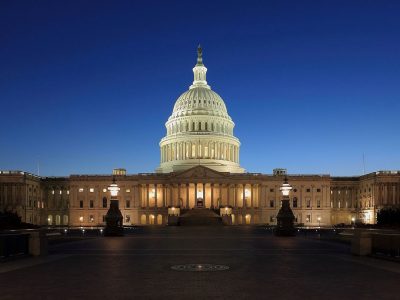
The omnibus spending bill is by no means a “climate law.” Because it spans the entire government, though, it has many provisions relating to climate change. They aren’t dramatic step forward. But the fact that they can pass as part of a bipartisan spending law is a sign of how climate change is slowly becoming normalized as a political consideration.
One significant provision relates to agriculture. It provides for private contributions to existing funds “for the purposes of addressing the changing climate, sequestering carbon, improving wildlife habitat, protecting sources of drinking water, and addressing other natural resource priorities.” The activities funded through the program may result in “environmental services benefits to be sold through an environmental services market.” A related provision would, according to the E&E News, “create a registry of third-party vendors whom farmers could consult to help measure the carbon benefits of various farm practices, with the idea of supporting voluntary carbon markets.”
These agriculture measures, which have the support of the farm lobby, are significant for two reasons. First, they increase the incentives for farmers to engage in regenerative agriculture and soil conservation. That’s a potentially significant carbon sink that we need to protect and foster. ( CLEE is contributing to this effort through GrizzlyCorps, which sends recent college graduates to work with farmers and ranchers.). Second, climate action doesn’t tend to be popular in rural areas. Programs like this can be helping people think about climate action in a more supportive way.
The bill also contains a significant budget increase for DOE. As another E&E News story reports, “the funds would support the department’s efforts to scale carbon capture and removal technologies, advance technologies aimed at boosting the resilience of the U.S. electricity system and reduce emissions from heavy industry like steel and concrete, among other initiatives.” DOE’s new Grid Deployment Office will get $59.5 million, as a boost to efforts to build out the transmission we need to handle a surge of renewable energy.” There is also $685 million to find new ways to cut carbon emissions from industry. For the first time, the bill also authorizes the federal government to purchase carbon that has been removed from the air or the ocean.
Finally, the omnibus contains funding for agencies whose portfolios include climate adaptation: $317 million for the Army Corps (plus $1.1 billion for building after Hurricanes Ian and Fiona), increased spending on the Salton Sea which is being dried up in the California drought, and reauthorization for a Colorado River water conservation program.
One disappointment about the bill is international climate spending. The bill provides only a $1 billion dollars. That’s only a third of what Democrats wanted and much less than Biden has promised by 2024. On the other hand, it’s a billion dollars more than the zero spending Republicans would prefer.
The 117th Congress has made major progress on climate change, with hundreds of billions of dollars of new spending in the Infrastructure Law, the CHIPS Act, and the Inflation Reduction Act. Although it’s imperfect, the omnibus isn’t a bad way to cap off this Congress.